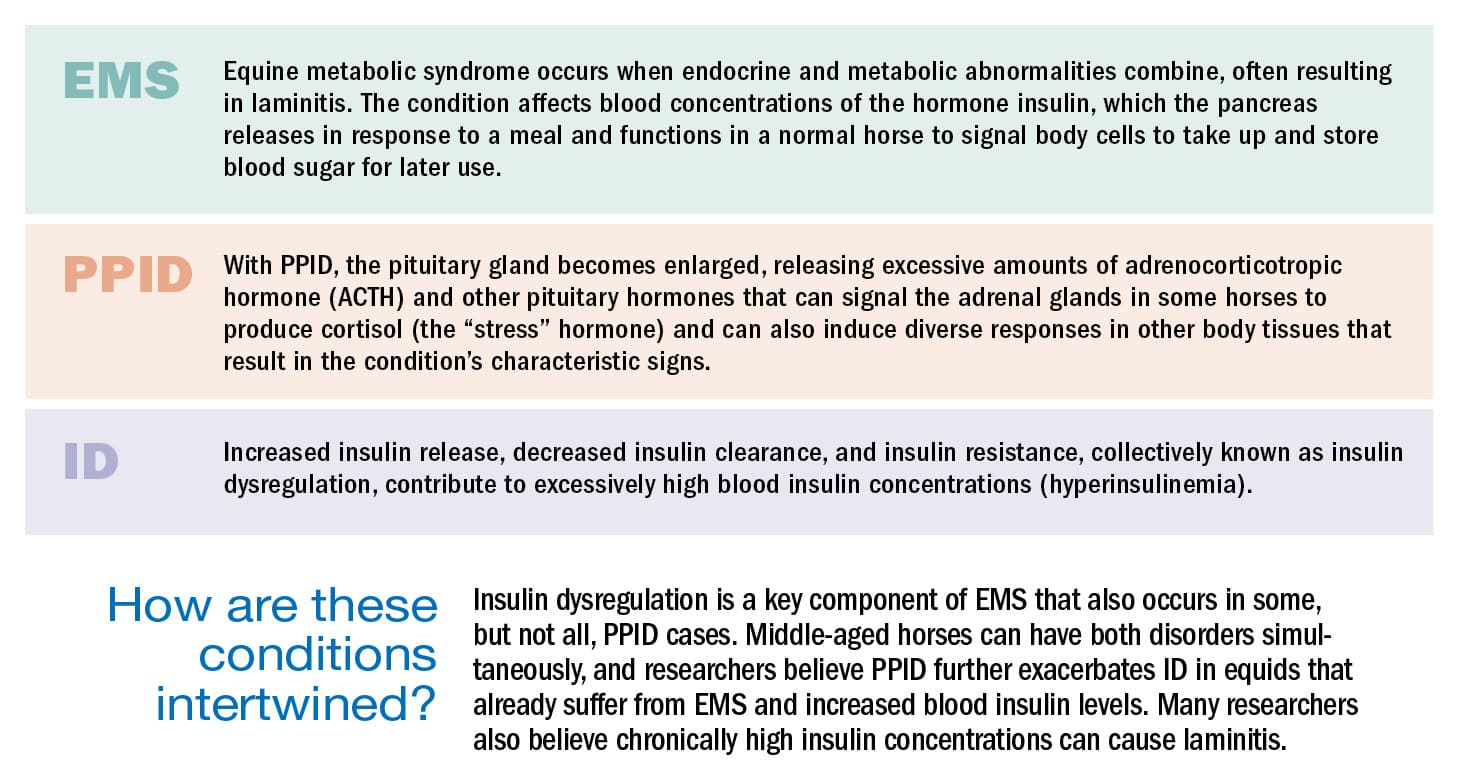Understanding Equine Endocrine Disorders

The horse’s endocrine system includes the hypothalamus; pituitary, thyroid, and adrenal glands; the pineal body; pancreas; and reproductive organs. The hypothalamus, pituitary, and thyroid are key players in equine endocrine disorders—the hypothalamus instructs these glands to secrete signaling chemicals called hormones into the bloodstream that direct certain organs to perform certain tasks. When organs and glands over- or under-secrete hormones or when tumors affect an organ, horses can develop disorders such as pituitary pars intermedia dysfunction (PPID, formerly called equine Cushing’s disease), equine metabolic syndrome (EMS), or insulin dysregulation (ID).
These conditions are concerning because they all put horses at risk of developing the devastating hoof disease laminitis. Further, they can be challenging to diagnose because early signs are subtle and affected horses don’t always exhibit the same signs.
We’ve created a handy chart to help you better understand endocrine disorders and how to identify and manage them. But first, let’s define these diseases.



Related Articles
Stay on top of the most recent Horse Health news with


















